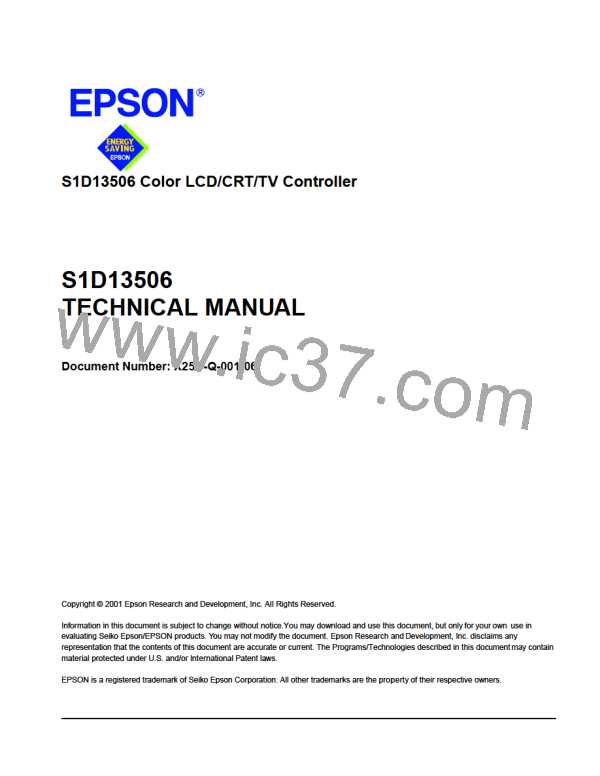Page 136
Epson Research and Development
Vancouver Design Center
14.2.9 Hardware Cursor
The routines in this section support hardware cursor. Most of the calls look similar to
normal drawing calls (i.e. seDrawCursorLine()); however, these calls remove the
programmer from having to know the particulars of the cursor memory location, layout and
whether portrait mode is enabled.
The same S1D13506 uses the same hardware for both hardware cursor and ink layer which
means that only the cursor or the ink layer can be active at any given time.The difference
between the hardware cursor and the ink layer is that in cursor mode the image is a
maximum of 64x64 pixels and can be moved around the display while in ink layer mode
the image is as large as the physical size of the display and is fixed in position. Both the ink
layer and hardware cursor have the same number of colors and handle these colors identi-
cally.
DWORD seInitCursor(void)
DWORD seInitLcdCursor(void)
DWORD seInitCrtCursor(void)
DWORD seInitTvCursor(void)
Description:
These functions allocate cursor memory, fills the cursor image with a transparent block,
and enable the cursor. If memory was previously allocated for the cursor, this memory is
first released.
The S1D13506 supports two independent hardware cursors, one on a panel surface and
one on the CRT/TV surface.
Use seInitCursor() to initialize the cursor for the active surface.
Use seInitLcdCursor(), seInitCrtCursor(), and seInitTvCursor() initialize the cursor on the
display surface indicated in the function name.
Parameters:
None.
Return Value:
The return value is the thirty-two bit offset to the start of the hardware cursor memory. If
there is an error the return value is 0.
Note
On a 16-bit DOS the return value must be converted into a segment:offset before use.
S1D13506
X25B-G-003-03
Programming Notes and Examples
Issue Date: 01/02/06

 EPSON [ EPSON COMPANY ]
EPSON [ EPSON COMPANY ]